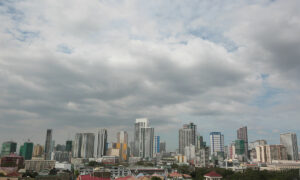




Philippines Trade Update: Trade trajectories trend along
 DOWNLOAD
DOWNLOAD

Policy Rate Updates: Double cut finale
 DOWNLOAD
DOWNLOAD

Monthly Economic Update: One for the road
 DOWNLOAD
DOWNLOAD


Bad loan ratio soars to near two-year high

The banking industry’s nonperforming loan (NPL) ratio soared to a near two-year high in May, data from the Bangko Sentral ng Pilipinas (BSP) showed.
The Philippine banking industry’s gross NPL ratio rose to 3.57% in May from 3.45% in April and 3.46% a year ago.
This matched the 3.57% ratio in July 2022. It was also the highest in 23 months or since 3.6% in June 2022.
Data from the BSP showed that soured loans rose by 3.1% to P495.67 billion in May from P480.65 billion a month earlier. Year on year, it jumped by 13.7% from P436.12 billion.
Loans are considered nonperforming once they remain unpaid for at least 90 days after the due date. These are deemed as risk assets since borrowers are unlikely to pay.
The loan portfolio of Philippine banks dipped by 0.3% to P13.89 trillion as of end-May from P13.94 trillion at end-April. However, it increased by 9.3% from P12.6 trillion a year ago.
Past due loans dropped 1.6% to P608.07 billion in May from P618.04 billion a month earlier but rose by 15.7% from P525.51 billion in the previous year.
This brought the past due ratio to 4.38%, lower than 4.43% in April but higher than 4.17% a year ago.
On the other hand, restructured loans stood at P295.89 billion, up by 1.9% from P290.37 billion in April but 4.6% lower than P310.3 billion a year ago.
These borrowings accounted for 2.13% of the industry’s total loan portfolio, higher than 2.08% a month ago but lower than the 2.46% in May 2023.
Banks’ loan loss reserves inched up by 0.7% to P474.88 billion in May from P471.35 billion in April and rose by 6.9% from P444.03 billion a year ago.
This brought the loan loss reserve ratio to 3.42%, up from 3.38% last month but lower than 3.52% a year ago.
Lenders’ NPL coverage ratio, which gauges the allowance for potential losses due to bad loans, slipped to 95.81% from 98.07% in April and 101.81% in May 2023.
Rizal Commercial Banking Corp. Chief Economist Michael L. Ricafort said the higher NPL ratio was due to elevated interest rates.
The Monetary Board has kept its benchmark rate at 6.5%, the highest in over 17 years, since October 2023.
Mr. Ricafort also cited the weaker peso, which sank to the P58-per-dollar level in May. The local currency has been inching closer to its record low of P59 against the dollar in recent weeks.
“For the coming months, possible Fed and local rate cuts would help ease borrowing costs and spur greater demand for loans and other business activities, which would eventually help ease the NPL ratio going forward,” Mr. Ricafort said.
BSP Governor Eli M. Remolona, Jr. has said that the central bank could begin its policy easing by August. He has also signaled rate cuts of up to 50 basis points for the entire year.
The Monetary Board is set to meet on Aug. 15, its only meeting in the third quarter. The last two meetings this year are scheduled for Oct. 17 and Dec. 19.
US Federal Reserve officials at their last meeting said the US economy appeared to be slowing and that “price pressures were diminishing,” but still counseled a wait-and-see approach before committing to interest rate cuts, according to minutes of the June 11-12 session, Reuters reported.
Fed officials earlier signaled cutting rates as late as December and priced in just one cut from three previously. – Luisa Maria Jacinta C. Jocson, Reporter
This article originally appeared on bworldonline.com





 By BusinessWorld
By BusinessWorld